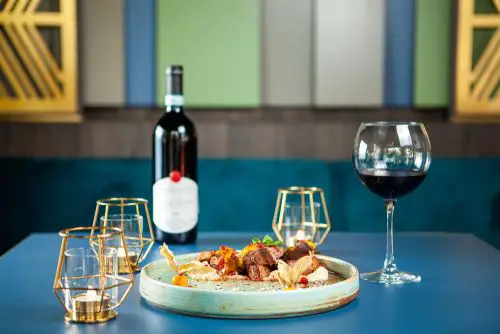Listrac Médoc is the most inland communal appellation within the  Médoc and has been an AOC since 1957. At the beginning of the last century Listrac was one of the largest appellation in Médoc.
Médoc and has been an AOC since 1957. At the beginning of the last century Listrac was one of the largest appellation in Médoc.
Listrac owes its name to the Romans who brought viticulture to the region – the Latin word “Listra” means “edge, border, boundary”.
Médoc means “the land in the middle” as it is located on the triangular peninsula formed by the river delta formed by the confluence of the Garonne and Dordogne Rivers on the one hand and the Atlantic ocean on the other. The Roman name for it was “Pagus Medulorum” and the native Gallic tribe were known as the Medulli.
In the past, the Listrac region swung quite happily from vine growing to forestry, and from farming to stock rearing. That is easily  explained by the fact that in addition to its gravely outcrops, reserved for wine, Listrac has vast meadow lands, areas of forests and richer, more fertile soils ideally suited to many other crops.
explained by the fact that in addition to its gravely outcrops, reserved for wine, Listrac has vast meadow lands, areas of forests and richer, more fertile soils ideally suited to many other crops.
This AOC is also known as the “roof of the Médoc” because of its lofty altitude of 43 metres. The proximity of the vast Landes forest, which protects this appellation from prevailing winds, enables grapes to ripen slowly and regularly.
The vines spread over three gravely terraces lying over a limestone base. This terroir offers particularly impressive natural drainage, where roots can penetrate deeply to find nutrients.
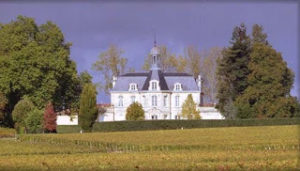 Listrac wines can easily be said to be firm, textured and powerful. They are fresh, aromatic and have complex aromas of red and black berries, liquorice, wood, soft spices or leather. On the palate, these wines are frank, balanced, structured, fleshy and aromatically rich.
Listrac wines can easily be said to be firm, textured and powerful. They are fresh, aromatic and have complex aromas of red and black berries, liquorice, wood, soft spices or leather. On the palate, these wines are frank, balanced, structured, fleshy and aromatically rich.
These powerful wines have a significant ageing potential. Châteaux to look out for are Bellegrave, Clarke, Fonréaud, Fourcas Dupré, Fourcas Hosten, Fourcas Loubaney, Maucaillou, Mayne Lalande, Lestage, and Vieux Moulin.
Listrac is also home to another branch of the wine making Rothschild family – Edmond de Rothschild (great grandson of James Rothschild) founded Compagnie Vinicole Edmond et Benjamin de Rothschild which has 4 estates in the Listrac and Moulis appellations of Bordeaux.
The original estate was known as Granges and had first been planted with vines in the 12th century by Cistercian monks from Vertheuil Abbey, spread over five Médoc localities in the 1100s.
In the centuries that followed this vast estate changed hands many times, so that its 230 hectares was gradually broken down into smaller landholdings.
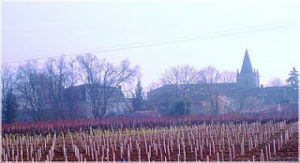 Between 1973 and 1979 Baron Edmond de Rothschild bought a number of parcels that had formed the original estate.
Between 1973 and 1979 Baron Edmond de Rothschild bought a number of parcels that had formed the original estate.
Together they comprise a surface area of 132 hectares situated within the boundaries of Listrac and Moulis containing Châteaux Clarke and Peyre Lebade in Listrac and Châteaux Malmaison and Les Granges in Moulis.
Château Clarke takes its name from an Irish Knight who purchased the château in 1818. Tobie Clarke, was a great grandson of James Clarke, who was an alderman of Dublin City in 1688.
 Château Peyre Lebade has a rich historical heritage, marked by several famous individuals. The limestone-rich geology of the site certainly influenced the name of the property, since Peyre-Lebade means “Raised-Rock” (pierre levée). Indeed, the site features a former limestone quarry, which was probably used in building the neighbouring villages.
Château Peyre Lebade has a rich historical heritage, marked by several famous individuals. The limestone-rich geology of the site certainly influenced the name of the property, since Peyre-Lebade means “Raised-Rock” (pierre levée). Indeed, the site features a former limestone quarry, which was probably used in building the neighbouring villages.
As in the case of Château Clarke viticulture on the site dates back to the Cistercian monks of the Vertheuil Abbey in the 12th century. Several centuries later, in 1835, Bertrand Redon purchased the Peyre Lebade estate. His son, the great painter, Odilon Redon inherited the château from his father and painted most of his most famous paintings at this estate.
There is a lovely recipe which pairs well with the wines of Listrac Médoc: T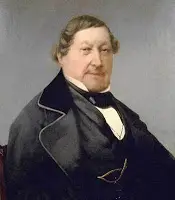 ournedos Rossini. It’s a French steak dish, purportedly created for the composer Gioacchino Rossini – best known for The Barber of Seville and William Tell.
ournedos Rossini. It’s a French steak dish, purportedly created for the composer Gioacchino Rossini – best known for The Barber of Seville and William Tell.
Legend has it that Rossini shed tears only three times in his life: the first time after the fiasco of his first opera; the second when he heard Niccolo Paganini play the violin and the third when a picnic basket containing turkey stuffed with truffles unfortunately fell overboard during a boat trip.
He was a great lover of fine foods and rare wines, (his wine cellar was famous) and Tournedos Rossini was created for him by his friend French master chef Antonin Careme.
The dish comprises a tournedos (filet mignon) of beef, pan-fried in butter, served on a crouton, and topped with a slice of whole foie gras. The dish is garnished with slices of black truffle, and finished with a Madeira demi-glace sauce.
 Tournedos Rossini
Tournedos Rossini
1 tbsp of butter
4 slices of foie gras (duck or goose) each approximately (7 to 10 mm thick)
4 slices of white bread, without the crust, toasted and cut the same size as the meat
4 beef tournedos
1 tbsp of olive oil
3 garlic cloves, finely sliced
½ cup of sauce: see below
2 sliced truffles – or substitute cepes or ushrooms of your choice.
Mix the butter and the oil in a hot frying pan. Season the tournedos with salt and pepper and fry rapidly to seal. Cook for 3 minutes until the steaks are crusted on the outside but rare inside.
Remove from the pan and set aside. Using the same pan, rapidly fry the slices of Foie Gras,until just caramelised. Remove, place on absorbent paper, and keep warm. Do not discard the juices in this pan.
Braise the truffles, cepes or mushrooms in a separate pan with a little butter and a spoonful of Madeira wine, and the chopped garlic. Add the sauce and let simmer for approximately three minutes. Keep hot.
For the sauce. Deglaze the pan used for the meat and foie gras with a tbsp of Port, two tsps of brandy two tsps of Madeira and 100 ml of beef stock.
Allow to reduce. Place each cooked tournedos on a slice of the toast and top with a slice of fois gras. With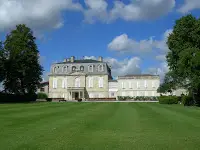 a slotted spoon lift out the truffles/mushrooms and place round the edges of the tournedos. Cover with sauce. Serve immediately.
a slotted spoon lift out the truffles/mushrooms and place round the edges of the tournedos. Cover with sauce. Serve immediately.
I would recommend Château Pontet Canet (£35 – £75 a bottle depending on the vintage) to pair with your Tournedos. The Château takes its name from Jean-François de Pontet, Royal Master of the Horse and the then Governor of the Médoc who combined several vineyard plots in Pauillac in the early 18th century.
Years later, his descendants added neighbouring vines in a place named Canet. This was the beginning of one of the largest estates in the Médoc. Pontet Canet’s wines are deep crimson, almost black and have a bouquet of blackcurrant, liquorice and preserved fruits with notes of cedar, and cocoa. It produces powerful, full bodied, well structured, long lived wines famous for their finesse and elegance.
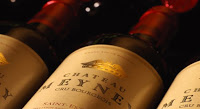 Another excellent choice would be Château Meyney (£14) which has very much been an insider’s choice as the wines have a been of persistently high quality throughout the 20th century.
Another excellent choice would be Château Meyney (£14) which has very much been an insider’s choice as the wines have a been of persistently high quality throughout the 20th century.
The wines of Meyney are deep, dark and concentrated with plenty of ripe blackcurrant fruit and a distinctive aroma of smoke, prunes, truffles, coffee and cherries. The wines are well structured, velvety smooth and weighty.
 Last but by no means least I would choose Chateau Les Tonnelles (£7.82) which is a sumptuous wine and is very classy. Les Tonnelles is a lovely, full bodied wine which is a dark, warm purple. It has been aged in oak for around 15 months , is smooth and round in the mouth and has flavours full of black fruits, raspberries, pepper and spices.
Last but by no means least I would choose Chateau Les Tonnelles (£7.82) which is a sumptuous wine and is very classy. Les Tonnelles is a lovely, full bodied wine which is a dark, warm purple. It has been aged in oak for around 15 months , is smooth and round in the mouth and has flavours full of black fruits, raspberries, pepper and spices.

